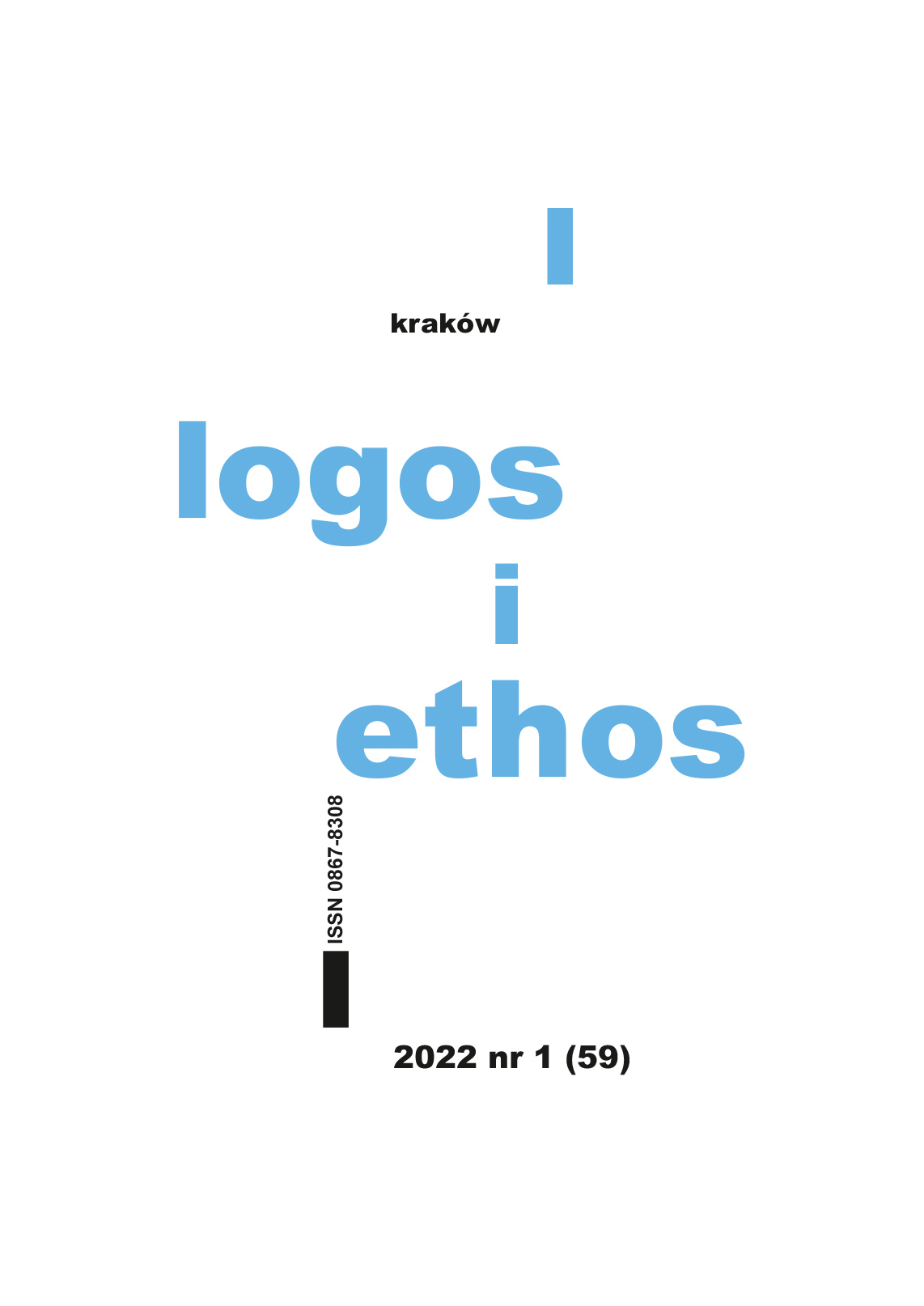„Piękno osoby” według Karola Wojtyły (ontologia i doświadczenie)
DOI:
https://doi.org/10.15633/lie.59101Słowa kluczowe:
Wojtyła, piękno, doświadczenie człowieka, osobaAbstrakt
Niniejszy artykuł kreśli zasadniczy zrąb myśli Karola Wojtyły na temat piękna. Wprowadzając centralną kategorię „piękna osoby”, Wojtyła zasadniczo zintegrował i uporządkował wszystkie inne znaczenia tego terminu. To, co jest piękne w adekwatnym ujęciu, jest i dobre moralnie. Odnośnie do piękna człowieka Wojtyła zwracał uwagę, że różnicuje się ono poprzez płeć – piękność kobieca i piękność męska, a także według „warstw” – piękno zewnętrzne (piękno estetyczne, zmysłowe, ciała) oraz ważniejsze od niego – piękno wewnętrzne, które stanowi o pięknie człowieka jako osoby. Piękno zewnętrze pozwala osobom się zauważyć, poznać, w miłości jednak nie można poprzestać na pięknie zewnętrznym (pokusa potraktowania ciała jako możliwego przedmiotu użycia). Miłość to bowiem miłość całej osoby, nie zaś wyłącznie jej pięknego ciała i seksualnej atrakcyjności. Szczegółowym zagadnieniem jest analiza tworzenia pięknych rzeczy, które zarazem odciskają się we wnętrzu człowieka i – o ile człowiek nie podda się egoistycznej „pokusie samoubóstwienia” – dają świadectwo o jego „nieśmiertelności”.
Bibliografia
Augustinus, De Trinitate, in: Sancti Aurelii Augusitini Opera omnia, ed. J.-P. Migne, Paris 1841, col. 819–1098 (Patrologiae Cursus Completus. Series Latina, 48).
Dostoyevsky F., The Idiot, transl. E. Martin, The Floating Press [s.l.] 2009.
Eckmann A., Radość (“gaudium”) w nauczaniu św. Augustyna [Joy (“Gaudium”) in the Teaching of St. Augustine], “Vox Patrum” 32 (2012) No. 58, p. 307–314.
Frossard A., “Be Not Afraid!”. John Paul II speaks out on his Life, his Beliefs, and his Inspiring Vision for Humanity, transl. J. R. Foster, New York 1984.
John Paul II, Letter to Artists, Vatican City 1999.
Kalendarium życia Karola Wojtyły [Calendar of Karol Wojtyła’s Life], oprac. A. Boniecki, Kraków 2000.
Kent Sprague R., Dissoi Logoi or Dialexeis, “Mind” 77 (1968) No. 306, p. 155–167, https://doi.org/10.1093/mind/LXXVII.306.155.
Krasiński Z., Nie-Boska Komedyia [The Un-divine Comedy], Typografia A. Pinard, Paryż 1835.
Krasiński Z., The Un-divine Comedy, transl. H. E. Kennedy, Z. Umińska, London–Warsaw 1924.
Norwid C. K., Promethidion. Rzecz w dwóch dialogach z epilogiem [Promethedion. A Work in Two Dialogues with an Epilogue], Paryż 1851.
Radziechowski D., Filozoficzna koncepcja kultury Romana Ingardena i Karola Wojtyły. Studium analityczno-krytyczne [Philosophical Concept of Culture of Roman Ingarden and Karol Wojtyła. Analytical-critical Study], Kraków 2021.
Radziechowski D., Piękno jako kategoria antropologiczna w ujęciu Karola Wojtyły [Beauty as an Anthropological Category in the Thought of Karol Wojtyła], “Ethos” 31 (2018) No. 3 (123), p. 270–281.
Sawicki J. J., Czy i jakim tomistą był ks. Kazimierz Wais [Whether and What Kind of a Thomist was Fr Kazimierz Wais], “Studia Philosophiae Christianae” 2 (1966) No. 1, p. 296–315.
Wais K., Ontologja, czyli metafizyka ogólna [Ontology, that is general metaphysics], Lwów 1926.
Wojtyła K., Chrześcijanin a kultura [Christian and Culture], “Znak” 16 (1964) No. 10 (124), p. 1153–1157.
Wojtyła K., Ewangelia a sztuka. Rekolekcje dla artystów [The Gospel and Art. Retreat for Artists], red. A. Dobrzyński, Kraków–Rzym 2011.
Wojtyla K., The Jeweler’s Shop. A Meditation on the Sacrament of Matrimony, Passing on Occasion into a Drama, transl. B. Taborski, San Francisco 1992.
Wojtyla K., Love and Responsibility, transl. H. T. Willetts, London 1981.
Wojtyła K., Person and Act, transl. G. Ignatik, in: K. Wojtyła, “Person and Act” and Related Essays, Washington 2021, p. 93–416.
Wojtyla K., The Problem of the Constitution of Culture Through Human Praxis, in: K. Wojtyla, Person and Community. Selected Essays, transl. T. Sandok, New York [etc.] 1993, p. 263–275.
Wojtyła K., Tajemnica i człowiek [Mystery and Man], in: K. Wojtyła, “Aby Chrystus się nami posługiwał”, red. J. Hennelowa, Kraków 1979, p. 28–35.
Pobrania
Opublikowane
Numer
Dział
Licencja

Utwór dostępny jest na licencji Creative Commons Uznanie autorstwa 4.0 Międzynarodowe.
Autorzy publikujący w czasopiśmie udzielają jego wydawcy zgody o następującej treści:
- Autor zachowuje autorskie prawa majątkowe do utworu, a jednocześnie udziela wydawcy czasopisma zgody na jego pierwszą publikację w wersji drukowanej i wersji online na licencji Creative Commons Uznanie autorstwa 4.0 Międzynarodowe oraz zgody na wykonywanie opracowań, w tym przekładów.
- Autor ma możliwość udzielania zgody niewyłącznej na opublikowanie utworu w wersji, która ukazała się w czasopiśmie (np. zamieszczenia go w repozytorium instytucjonalnym lub opublikowania w książce), wraz z informacją o jego pierwszej publikacji w czasopiśmie.
- Autor może umieścić swój utwór online (np. w repozytorium instytucjonalnym lub na swojej stronie internetowej) jeszcze przed zgłoszeniem utworu do czasopisma.

